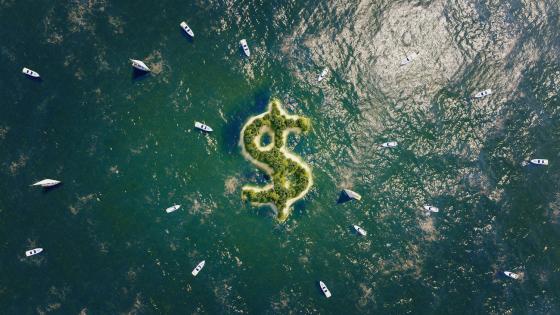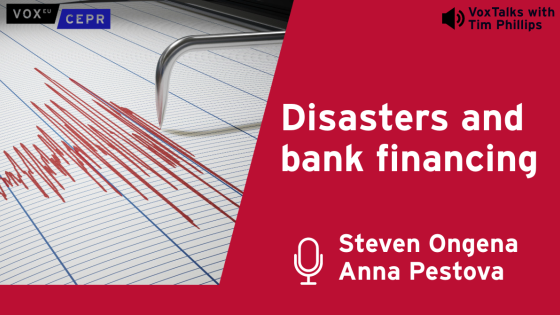Banking crises throughout the ages have been precipitated by the exposure of malfeasant banks (and bankers). In 1720, insider trading and fraudulent misrepresentation led to the collapse of both the South Sea and Mississippi bubbles. The attempted cornering of the US bond market kindled the Panic of 1792. The sale of investments in the imaginary Latin American country of Poyais led to the Panic of 1825. ‘Wildcat banking’ helped produce the Panic of 1837. The embezzlement of assets from the Ohio Life and Trust Co instigated the Railroad Crisis of 1857. Jay Gould and James Fisk's cornering of the gold market precipitated the 1869 Gold Panic. Cooke and Company's failure to disclose losses on Northern Pacific Railroad stock sparked the Panic of 1873. A failed cornering of United Cooper's stocks instigated the Panic of 1907. The Hatry Group's use of fraudulent collateral to buy United Steel, the sale of Florida swamp land, the Match King Hoax, the Samuel Insull fraud, and the disclosure of other swindles together ushered in the Great Depression. Insider trading and stock manipulation brought down Drexel Burnham Lambert, precipitating the largest insurance failure in US history. And this century, revelations of liar loans, no-doc loans, and NINJA loans saw the demise of 27major US and foreign financial firms, laying the groundwork for the Great Recession.
News of bad bankers doing bad things leads the public to defund the banks, often precipitously, which is termed a liquidity crisis (Pedersen 2008). In a recent paper, we take the view that liquidity crises are the result of, not the cause of, financial retrenchment and its attendant economic decline (Jackson and Kotlikoff 2018). Rather than study how banks fail, we focus on why banks fail. The reason offered is malfeasance. We treat intermediation, not liquidity provision via maturity transformation, as the raison d'être of banks, and the loss of intermediation services, not the loss of liquidity or maturity transformation, as the economic essence of a financial crisis.
Our demurral on liquidity and maturity transformation seems justified by theory and fact. As shown by Jacklin (1983, 1986, 1989) and Jacklin and Bhattacharya (1988), banks’ heralded role as maturity transformers can be either fully or largely replicated by financial markets alone. But unlike banks, when financial markets transform maturity, they do so without risk of financial panic, which destroys the very liquidity banks are said to provide. There is also scant evidence that banks are effective in transforming maturities. The historic real return on bank deposits has been minimal.
Our framework is simple – a two-period overlapping generations model with two sectors: farming and banking. Both sectors produce an identical good, namely, corn. Farming is small scale and done by sole proprietors. The banking sector gathers resources from multiple investors and engages in large-scale and more efficient farming. Production in farming is certain. Production in banking is uncertain due to banker malfeasance. Specifically, each period, every bank has an identical but random share of dishonest, negligent, or incompetent bankers in their employ, labelled bad bankers. These bankers purloinor lose all output arising from investments placed with them. Consequently, if 20% of bankers are bad, the banking industry will produce 20% less output.
The share of bad bankers obeys a state-dependent Markov process. On average, the share is low enough and banking is productive enough for banking to generate a higher expected return than farming and, thereby, attract considerable investment. But when a larger than expected number of bad bankers surfaces, the projected future share of bad bankers rises. This causes investors to shift out of banking, potentially abruptly, until sufficient time has passed to lower the expected share of malfeasant bankers. This process produces not just periodic and, potentially, extended banking crises, but also a highly inefficient economy.
Introducing deposit insurance eliminates one problem and introduces another. It ends banking crises but at the price of keeping bad bankers in business. The result is higher total output, but more stolen output. Since the government levies taxes to fund its insurance of purloined or lost output, the insurance does nothing to reduce badbanker risk. Nor does it insure anything real. It simply induces households to invest with banks regardless of the risk. Like a compensated tax, deposit insurance distorts behaviour, producing an excess burden.Moreover, in our model, the share of malfeasant bankers is an aggregate risk, which the government has no power to mitigate.
Monitoring banking practices is another option. Monitoring in our model focuses on whether bankers are honest, not – as in Townsend (1979) – on the return achieved by honest bankers. But information, once released, becomes a public good. Since households have no incentive to keep the results of their monitoring private, they will likely share what they know. In this case, each household will free-ride on the monitoring of others. This reduces, if not eliminates, monitoring.
The medium for financial malfeasance in all its manifestations is financial opacity. Leading up to 2008, opacity provided full cover for liar loans, no-doc loans, NINJA loans, Madoff's swindle, originate-to-distribute abuses, CDOs-squared and other extremely complex tranched derivatives, unreported CDS positions, ratings shopping, failures (with government approval) to mark assets to market, and the list goes on. The revelation of financial fraud amidst the financial fog produced the rush to liquidity that resulted in the downfall of so many high-profile banks. Had there been no malfeasance there likely would have been no crisis.
Disclosure addresses the opacity problem directly by shutting down malfeasant bankers' modus vivendi, namely, operating in the dark. Turning on the lights requires government provision of the missing public good, namely, pubic revelation – either in full or in part (depending on cost) – of the malfeasance. This weeds out bad banking, raising non-stolen output and welfare. The practical counterpart of this policy prescription is real-time government disclosure and verification of all bank assets and liabilities to ensure that the net capital invested in banks is actually being used to produce output that's paid to investors and workers.
Although our model is highly stylised, its calibration suggests that relative to no policy, deposit insurance produces a 4% efficiency loss (measured as a share of consumption), private monitoring achieves a 1% efficiency gain, and a high degree of government disclosure can produce upwards of a 40% efficiency gain. A policy of disclosure does not, by the way, require a massive government bureaucracy. Instead, the government can hire companies that work exclusively for the government to verify assets and provide real-time disclosure regarding the status of those assets.
If, as modelled here, the revelation of ‘good’ bankers gone bad (rather than bad things happening to good banks) is the source of financial crisis, dramatically expanding the government's role in verification and disclosure of assets may be the answer. This prescription is the polar opposite of those who tout opacity as essential for maintaining liquidity of bank liabilities. The difference in perspective can be understood by considering counterfeit currency. If no one knows that some currency is counterfeit, both bad and good currency will be sources of liquidity. Disclosing the counterfeits can produce a run on (actually, a run away from) currency, both good and bad. Is society better off suppressing news of the counterfeits and letting them continue to circulate? Doing so maintains liquidity, but permits ongoing theft and risks financial panic if news leaks out. The answer, in practice, is no. Counterfeiters are disclosed and prosecuted as a public service.
No one would expect private citizens to actively investigate counterfeiters. But when it comes to banking, many have faulted investors – the vast majority of whom are quite small – for failing to keep track of their banks' behaviour. Indeed, the central premise of the US financial reform (Dodd-Frank) – that public funds will no longer be used to bail out private banks – appears predicated on the assumption that investors, knowing they are at risk, will better monitor their financial institutions. This flies in the face of the free-riding problem. Just as government is needed to monitor, uncover, and disclose counterfeiting, our model suggests that government is needed to verify and disclose, in real time, all bank assets and liabilities. The need for real-time government verification and disclosure, which we have elsewhere strongly advocated for (e.g. Kotlikoff 2010), is at strong odds with a recent paper by Dang et al. (2017), which defends banking opacity as necessary to strengthen banks’ provision of liquidity insurance. But Dang et al.’s framework is one of exclusively honest bankers trying their best to protect the public from itself. Counterfeiters don’t exist in their model, just agents who irrationally worry about them. Given recent and past evidence, it seems high time that we view bankers as having their full complement of thieves and incompetents – and to encourage government to weed out the wolves, rather than dress them in sheep’s clothing.
References
Dang, TV, G Gorton, B Holmström and G Ordoñez(2017),“Banks as secret keepers,” American Economic Review 107(4):1005–29.
Jacklin, CJ (1983),“Information and the choice between deposit and equity contracts,” Stanford University, mimeo.
Jacklin, CJ (1986),“Banks and risksharing: Instabilities and coordination,” University of Chicago, mimeo.
Jacklin, CJ (1989),“Demand equity and deposit insurance,” Stanford University, mimeo.
Jacklin, CJ and S Bhattacharya(1988),“Distinguishing panics and information-based bankruns: Welfare and policy implications,” Journal of Political Economy 96(3):568–592.
Jackson, T and LJ Kotlikoff (2018), “Banks as potentially crooked secret keepers,” NBER Working Paper 24751.
Kotlikoff, L J (2010), Jimmy Stewart is dead: Ending the world's ongoing financial plague with limited purpose banking, John Wiley & Sons.
Pedersen, L (2008), “Liquidity risk and the current crisis,” VoxEU.org, 15 November.
Townsend, R (1979),“Optimal contracts and competitive markets with costly state verification,”Journal of Economic Theory 21(2):265–293.




